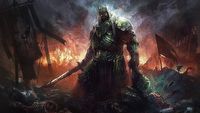Story in Diablo Has Never Been Black-and-White, But Only Diablo 4 Really Takes It For Real
Diablo almost always exuded darkness, but brought seemingly binary morality. Spoiler: it was never really like that. This world was drowning in a sea of grayness from the beginning. However, only Diablo 4 really taps into this moral ambiguity.
2
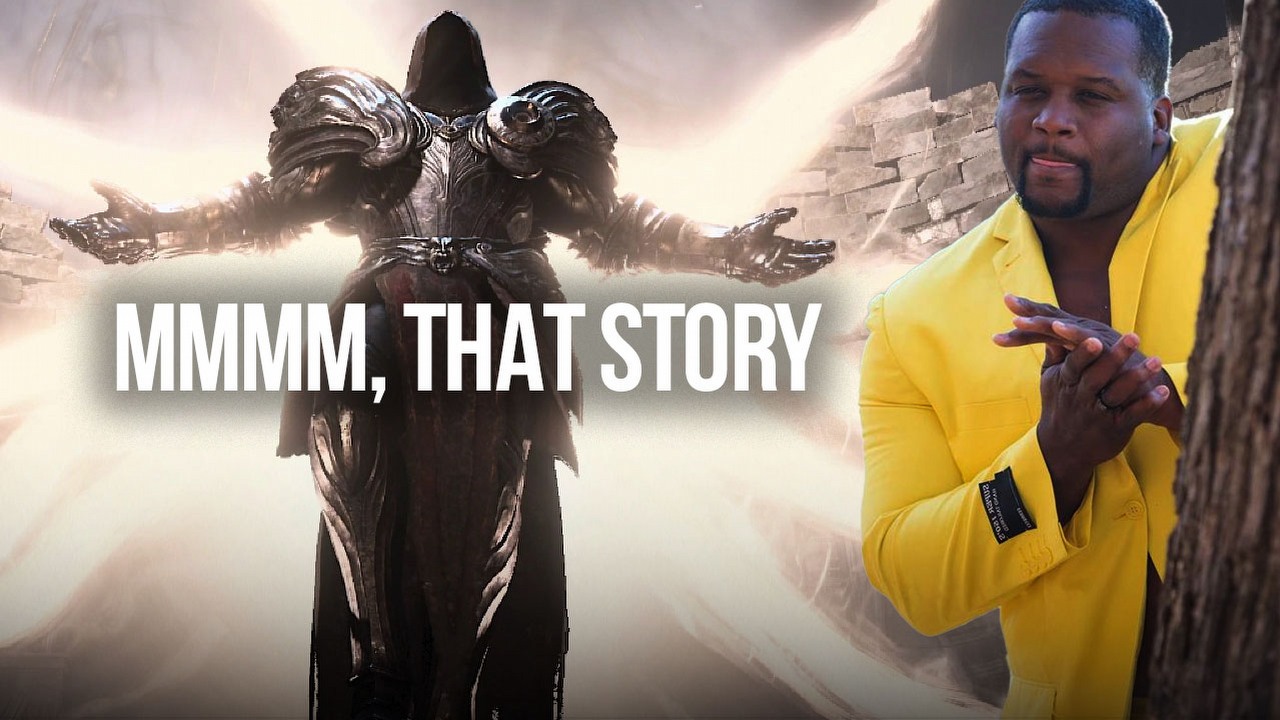
On the surface, it all seems simple. You take your paladin, or whatever name Blizzard invented for the guy with a shield and a sword, prowl through the wastelands and dungeons, and somewhere at the end, Diablo is waiting with his pals. Their only purpose there is so that the evil, after having their jolly good time in Sanctuary, can get a fierce ass-kicking from the good. Simple divisions, simple rules, some mysterious, armored, but also kind-hearted angels flying somewhere in the skies. Good-bad, black-white, light-dark (and good loot for good deeds, of course)... Well, not really. The Diablo universe has always been filled with moral grayness. It just wasn't always apparent. Only Diablo 4 fully taps into the complex, non-binary morality of this world.
BEWARE OF LOW-PASSING SPOILERS
Diablo wants to, but is afraid
Diablo has always excelled at showing the horror that would accompany a human's contact with forces of hell. The attention of most players gravitated towards the horror and the power of evil –demons and all that. Or they didn't focus on the story at all, just on the vibe, collecting loot and moving forward. For glory, better gear and higher levels of experience. Well, what is there to understand? There's an evil, and we have to wipe it.
It's all because Diablo has so far been constructed in such a way that the plot doesn't interfere with gameplay (in Diablo 4, you can also click through all dialogs, but I don't recommend it). If we didn't have to pay attention to it, we didn't. And when we did, then, at first glance, the whole thing seemed very shallow. The world was cracking under the onslaught of hellish powers, decaying and looking dilapidated, and we acted as janitors, supported by tired-but-kind NPCs surviving in the cities. Somewhere above shone a ray of hope in the form of archangel Tyrael. It looked like a clearly outlined conflict with a clear division into good and bad. Because why would you even negotiate with bloodthirsty demons?
And so, we take our homies, gather equipment and... Time to kick demon ass? Hell yeah! But wait. Stop. If we did not click through the dialogues, if we carefully read the info contained in the instructions (a super-climatic addition to Diablo 2, deepening the knowledge and immersion) – it turned out that the matter was much more complex. That yes, the devils are evil and destructive, but people are not much better.
Betrayal, corruption, slow decay of organized society, states, monarchs, and just commonplace scoundrels – sure, some misdeeds were due to the influence of the Dark Trinity, but some mortals allied with evil willingly, blinded by profits or just deceived. In Lord of Destruction, we had to stop and punish a traitor. Lazarus strongly supported King Leoric's downfall, entirely of his own accord. Izual, a fallen angel from act 4 of Diablo 2, turned out a traitor. Even on our side, there were allies who chose sides mainly for profit or out of necessity (such as Gheed the trader). We didn't pay much attention to it; not everyone needed these illusions to enjoy the slashing, and the foreground of the game didn't focus much on it either – still, it was all there.
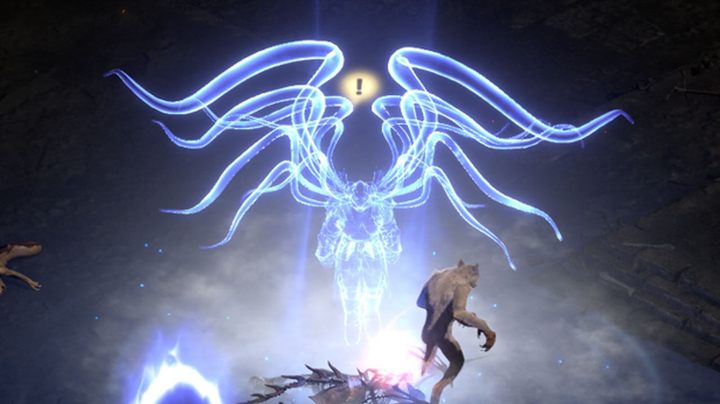
Paradoxically, Diablo 3 did a lot in the way of deepening the universe and exposing moral grayness. It failed in terms of presentation (direction, dialogue, art style), but it had a good premise – which Diablo 4 later took advantage of.
First of all, it rejected the simple division into good and evil inherent at the beginning of the conflict in the world of Sanctuary, so the illusion of division wasn't predetermined by anymore. Yes, the angels derived from the primordial good-light, and the demons from the primal evil-dragon. Moreover, the forces of hell remained the vicious beasts they always were till the end. But the angels... The angels turned out to be some sort of fascists-isolationists, cutting themselves off from people (the exception was the good guy Tyrael). The leader of the celestial forces, Imperius, at every opportunity showed how much he despised people – like a typical supremacist. Whatever our hero would do for the good of the world, the winged jerk was always unimpressed.
Moreover, in the original draft of the script for Reaper of Souls (or its successor, the unreleased King of the North), we were supposed to witness the final demise of Tyrael's former friend, and Malthael was only supposed to be a sidekick. Who knows, maybe part four will finally give the boy what he deserves? If you've been following this story, you might have had an urge to kick his ass more than once. Come on – you can tell me about it.
The very role of humanity has also changed. The only sensible trope that sprouted from the nephalem thread (people in the Sanctuary are, in Marvel terms, superpowered descendants of angels and demons, they just don't know it, and now, in the final hour, after centuries, they awaken their potential again), was that great power entails great risks. Sure, we could smash Malthael with a snap of our fingers, but the end of the story suggested that our heroes could go astray as soon as we stopped controlling them. Anyway, Malthael's madness – and Izual from the previous part – showed just how low angels could fall in this world.
The backdrop also included more of human traitors, scoundrels and characters who willingly reached for the hellish 'self-help' therapy to improve their stats (Adria, Mahda, corrupt Templars, some anonymous mercenaries). So, the foundations were there, a few good ideas survived, and were somehow not butchered. Ah, if only the dialogues were more believable than during the tenure of Jay Wilson, and the artistic setting went more hand-in-hand with the events. Well, at least Reaper of Souls improved it. And most of all, it left the ground prepared for further construction.
Diablo – flat out and without mercy
Despite the general doom and gloom, Diablo approached the matter in a rather timid fashion. All in all, it was still a story with characters clearly divided into victims, defenders and aggressors. But that changes in Diablo 4. Diablo 4 seems to go pretty heavy on moral ambiguity. It's a world where everyone compromises, and hardly anything is as simple as it seems. Just look at the comparative element mentioned in the previous installments – the crux of the conflict fueling the story and lore.
At least for the time being, Dark Trinity and High Heavens have been sidelined, the latter having almost completely cut ties with us, filthy commoners. Humanity is trying to survive, squished by the cogs of the war waged between angel Inarius and the demon Lilith, Mephisto's daughter (stays in the family). If you didn't know that yet, let me explain: This couple are the lovers responsible for Sanctuary's current shape. Tired of the eternal conflict of "good" and "evil," they romanced, and in the process, got other deserters from both sides on board.
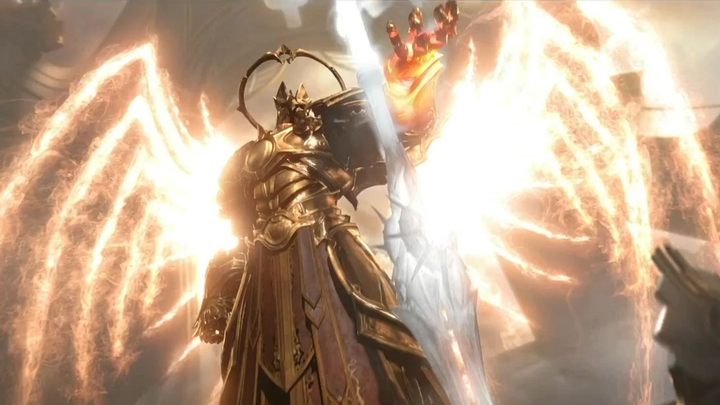
This affair of celestial beings and the hellspawn resulted in creation of the first humans, the nephalem – creatures so powerful that mommy and daddy probably went "whoa." Lilith wanted to seize the potential of their offspring, but Inarius decided to chop our ancestors down before it would be too late. In the end, the angel arrived in hell, Lilith plotted in exile, and neither of them was happy. Then, after many centuries, they're returning to this world again. Inarius has settled in his Church, while Lilith gathers followers and wreaks the merry havoc.
We don't know the ultimate stakes of the conflict yet (although one can suspect who will enter the game at some point, but for the time being hides in the form of a deformed wolf), but I have already written about the ambiguities of their clashes. If we're to believe the videos from the first act released so far, Lilith takes her role of a parent more seriously. Even if she does it in her own hellish way, she does have a twisted semblance of empathy. Inarius, on the other hand, exudes coldness and haughtiness from the get-go. Basically, he doesn't care about us. Like a classic overworked dad, he'll give his children a minor miracle once in a while to make them shut up, but otherwise, HE'S WORKING, YOU UNGRATEFUL NAMBY-PAMBY. Now listen to what your father says!
In a wonderfully and eerie scene from the prologue, we can clearly see what Lilith's modus operandi is all about. "Do as you please kids, heaven can wait." Mommy has been gone for a long time, but she's back, and so is fun! Although you have to sacrifice yourself sometimes so that mum has access to enough blood, but otherwise do whatever you dream of, including tasting your neighbor's brain. It's pretty sophisticated parenting, you know. And at the same time, she actually seems to be closer to people in this crazy way. The mysterious priest from the prologue turns to her for help – looking for salvation, as if on behalf of all humanity. It's like we're all screwed and only a demonic mommy can save us, even if she's playing 5D space chess at the same time, and wants to make humans her pawns.
This time it's not a typical war between good and evil, but a conflict of a pathological family, in which kids are at once the prize and the means. Yes, that’s us. Just like in a divorce, where children are bribed or persuaded to act against the other side. After all, Lilith also gathers her followers among violent cultists. While we as players are unlikely to have that choice, Diablo 4's story raises some intriguing questions and offers no easy answers. What's best for a corrupt man? Harsh, dry care full of demands, or empathy and freedom, however devoid of any boundaries and morality? Haughty distance and instrumentalization, or toxic concern? Even the NPCs fighting alongside the protagonist do not offer a clear answer to these questions.
Sure, we're back in the fray, and in the first act we're more likely to rattle the bones of Lilith's, rather than Inarius', henchmen, but even the latter are still just fellow beings just trying to get by, and Daddy, however corrupt he is, lends enough of his power to heal and defend mere mortals from the demons ravaging the lands. However, the boundaries in the conflict have been blurred, and the story will probably give us a few more twists and turns and may expose even more interesting contexts. Lilith stands in opposition not only to Heaven, but also to her uncles (Diablo, Baal) as well as to her own father. Inarius, on the other hand, served his time downstairs together with the devils, so his perspective may have been slightly distorted.
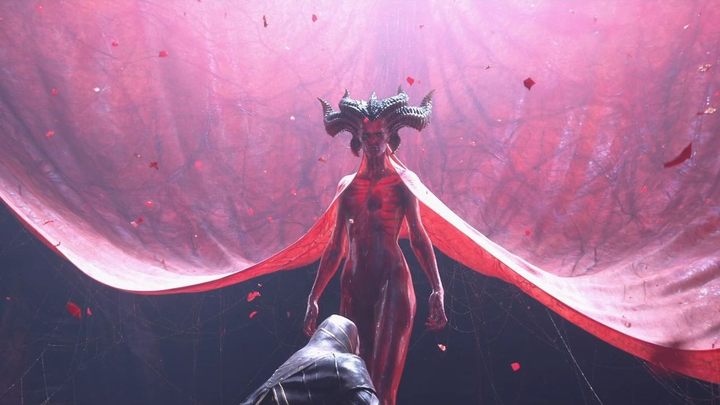
On top of that, there's ordinary human meanness, cruelty, selfishness, weakness, misunderstanding of others, and simple fear – all these attitudes and emotions become tangible both in the main and side quests of Diablo 4. These are a bit like stories from The Witcher 3, I mean the more depressing ones (a former CDPR designer actually contributed to Blizzard's newest game). Because maybe – this is the most terrible of questions, known, for example, from Sapkowski's books – maybe we don't even need the devil to whisper in our ear to make us the scum of the earth?
After completing a task in the game, i.e. reaching a miniboss and kicking the living soul out of them, be prepared to get as much XP as depression. In any quest's conclusion, it may turn out that, for example, the quest giver – an ordinary human, not possessed by anything – is the real culprit, the perpetrator of tragedy, who may have simply wanted to have us in the crosshairs (they simply didn't know who they were dealing with). It's not so much about fixing something as it is about, for example, unraveling a mystery. And we'll have to live on with it. This is as risky an approach to quest design as it is bold. And that's exactly what the horror convention requires.
People in the world of Sanctuary have grown even more bitter, and even if they still have a semblance of a sense of humor, it's as dark as a cloudy midnight in a cave. Everywhere I went, the dialogues, direction and music made it clear that the inhabitants were right on the edge. That they've had enough. That they will do anything, make any deal to save their own skin. It's no longer NPCs waiting to meet us in a few secure hubs. They are living, tormented individuals who have had their share of horror, and are exposed to a conflict much greater than themselves – and they face extremely difficult choices. Their dilemmas are often reminiscent of the experiences of war witnessed by civilians, just shown in a wicked, fantasy convention combined with gothic horror and seasoned with a hint of apocalypse.
Although mechanically it's still just a hack'n'slash motivating us with loot, Diablo 4 can achieve something incredible for the first time in the history of the series. It might give us many fascinating, yet unanswered questions, doubts, maybe even a slight dose of angst. I'm looking forward to it mainly because I'm looking for a miracle. There’s a chance that Diablo 4 will be the first action RPG to achieve the impossible. One that will emotionally batter me.
2

Author: Hubert Sosnowski
He joined GRYOnline.pl in 2017, as an author of texts about games and movies. Learned how to write articles while working for the Dzika Banda portal. His texts were published on kawerna.pl, film.onet.pl, zwierciadlo.pl, and in the Polish Playboy. Has published stories in the monthly Science Fiction, Fantasy, and Horror magazine, as well as in the first volume of the Antologii Wolsung. Lives for "middle cinema" and meaty entertainment, but he won't despise any experiment or Fast and Furious. In games, looks for a good story. Loves Baldur's Gate 2, but when he sees Unreal Tournament, Doom, or a good race game, the inner child wakes up. In love with sheds and thrash metal. Since 2012, has been playing and creating live action role-playing, both within the framework of the Bialystok Larp Club Zywia, and commercial ventures in the style of Witcher School.
Latest News
- End of remote work and 60 hours a week. Demo of Naughty Dog's new game was born amid a crunch atmosphere
- She's the new Lara Croft, but she still lives in fear. Trauma after Perfect Dark changed the actress' approach to the industry
- „A lot has become lost in translation.” Swen Vincke suggests that the scandal surrounding Divinity is a big misunderstanding
- Stuck in development limbo for years, ARK 2 is now planned for 2028
- Few people know about it, but it's an RPG mixing Dark Souls and NieR that has received excellent reviews on Steam, and its first DLC will be released soon

